The Nikon 14mm f/2.8 ED is the widest full frame Nikon prime currently available. It’s downright tiny compared to the AI Nikkor 13mm f/5.6s of thirty years ago, and a tad bigger than the 15mm f/5.6 AI of the same era. It’s fast, with good center performance and OK corner sharpness.
It’s not the first lens you’d put on an a7R. Why not just stick it on a D800E, and have a better-balanced combination and autofocus to boot? I tested it on the Sony because I wanted to see if SLR lenses had corner smear and color casts, and I figured if any SLR lens would, it would be this one.
Here’s what it looks like wide open. A lot of falloff, but the color looks good:
At f/4, there’s more light at the edges:
At f/5.6, even more:
And at f/8, the illumination of the sensor is as even as it’s going to get:
I made two series, one focused wide open on the central grape vines, and one focused wide open on the upper right tree branches. They appear identical, and I’m showing you results from the first one.
The center is a little soft at f/2.8, but not bad at all:
It crisps up quite a bit at f/4:
At f/5.6, it’s nice and sharp, and that’s as good as it gets:
At f/8, it looks about the same as at f5.6. f/11 is almost as soft as f/2.8. f/16 is worse, of course, and f/22 is an opening you’d only use in special circumstances.
At the upper right corner, it’s soft wide open. There is also a lot of chromatic aberration, which is easy to correct, but I didn’t, because the correction sometimes affects sharpness:
f/4 brings some improvement, and f/5.6 is close to as good as it gets:
f/8 is the sharpest aperture:
f/11 is close to f/8, f/16 is close to f/11, but softer, and it’s downhill after that.
Here is a link to a Photoshop file with all the center images in labeled layers.
Here is a link to a Photoshop file with all the upper right images in labeled layers.
My take is that this lens is fine on the a7R. The corner softness doesn’t have that “smeared” look; I’m pretty sure it’s all due to the lens. Putting the lens on a D800E wouldn’t prove anything; it’s a similar (identical?) sensor, and all the angles are the same.
This test leads me to speculate that all SLR lenses will work well on the Sony a7R.
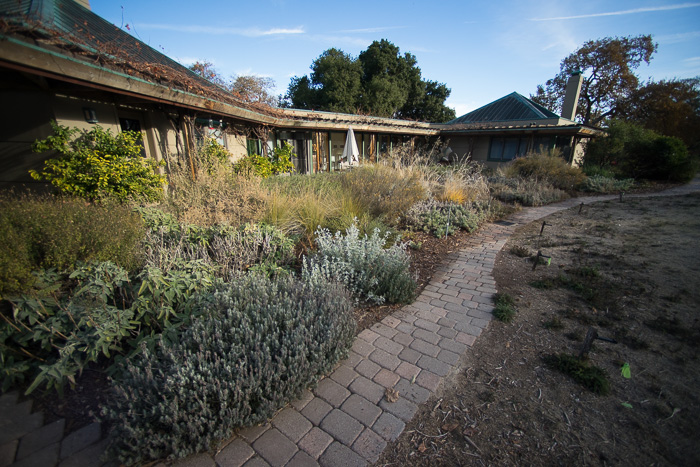
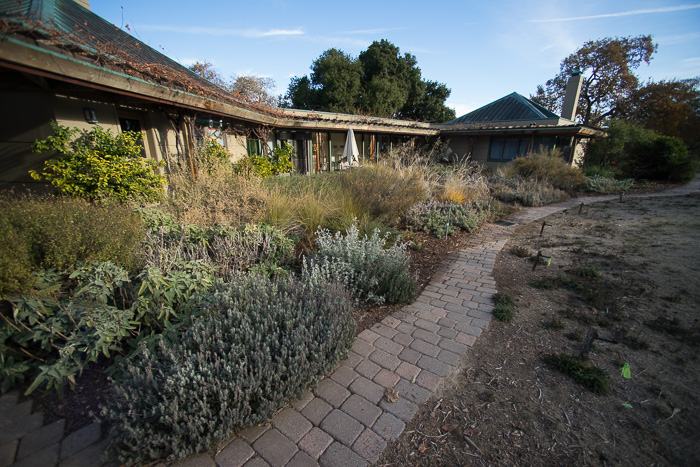
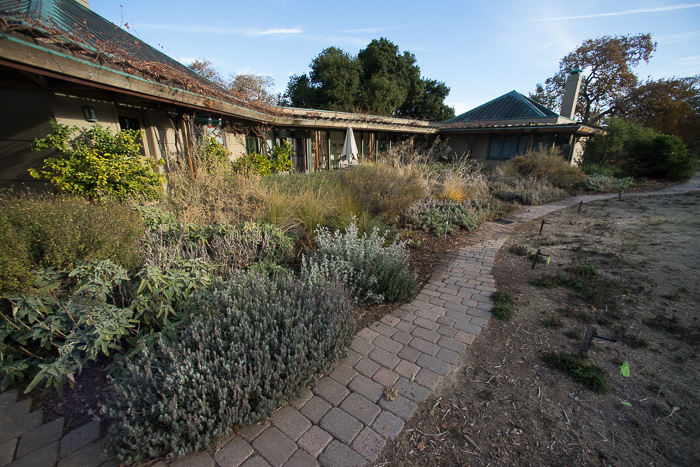
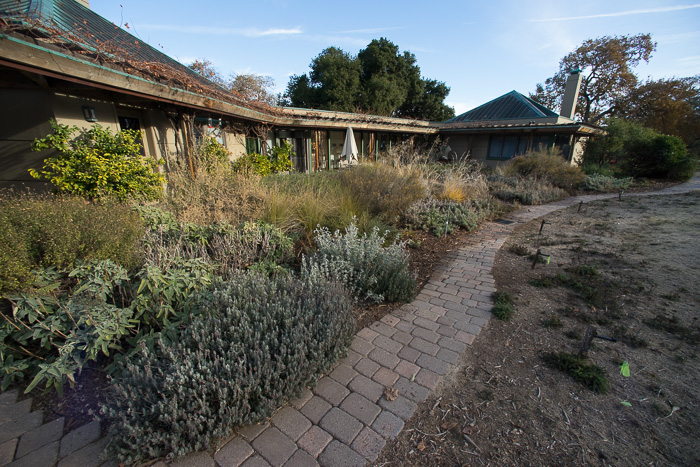


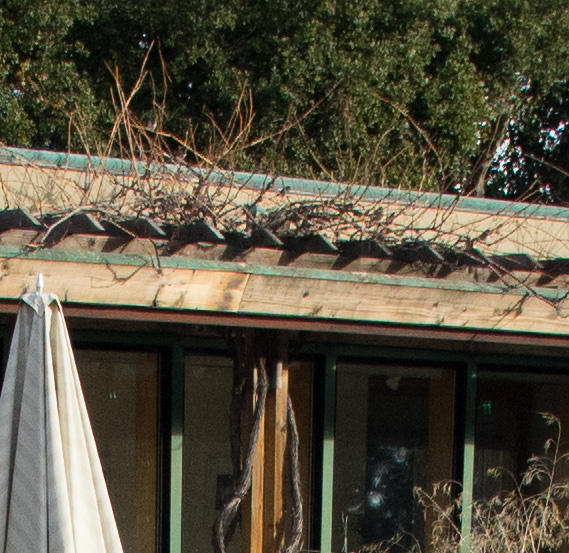
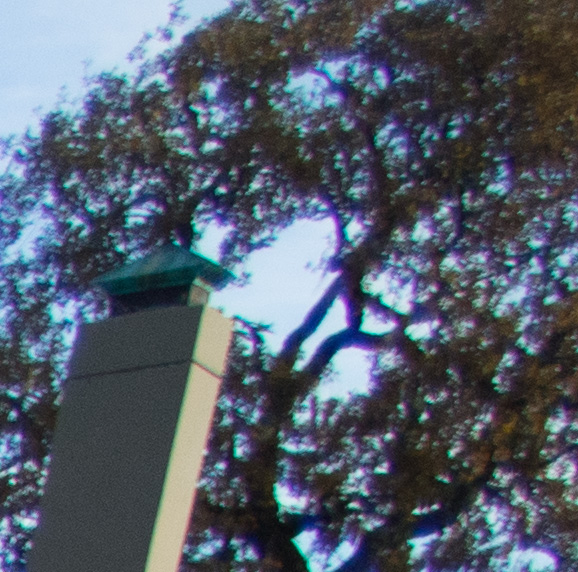
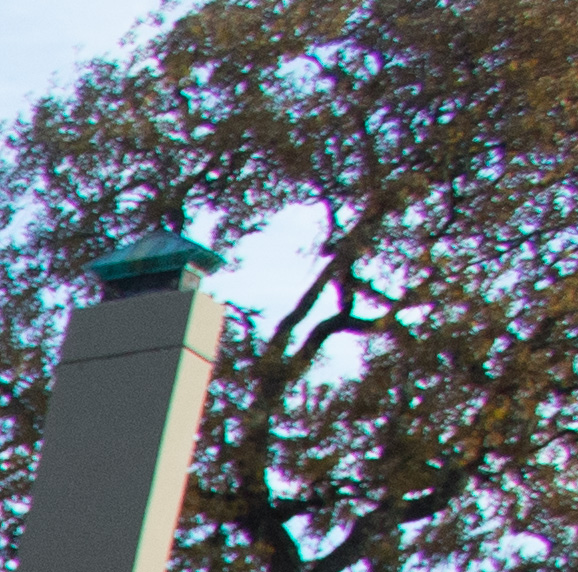
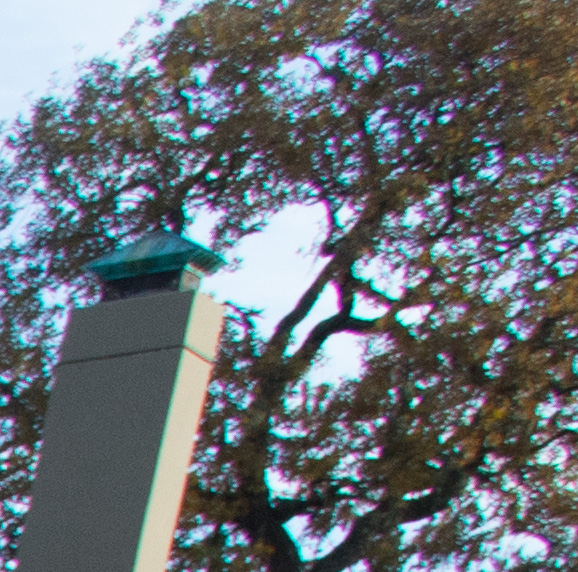
Hi,
Your statement concerning the 14mm prime lens of Nikon being introduced together with the D3 (2007) is simply false.
The Nikon 14mm f/2.8 AF-D is an ultra-ultrawide lens designed for film and FX digital cameras. It was introduced in 1999 at the same time as the historic D1. 2007 saw the introduction of the AF-S 14-24/2,8 G, which is much, much better than the old prime lens. This lens hit the shelves at the same time the D3 did.
For more information:
http://www.imagepower.de/IMAGES/imgEQUIPMENT/AFS1424.htm
But it would have been easy to find that out on the internet…;-)
best,
Michael Weber
IMAGEPOWER
Thanks, Michael; I’ll fix it. I was relying on my memory, and I confused the prime with the 14-24. I recall an ad with a motorcycle on a racetrack at dusk — or maybe my memory is playing tricks on me again…
Jim